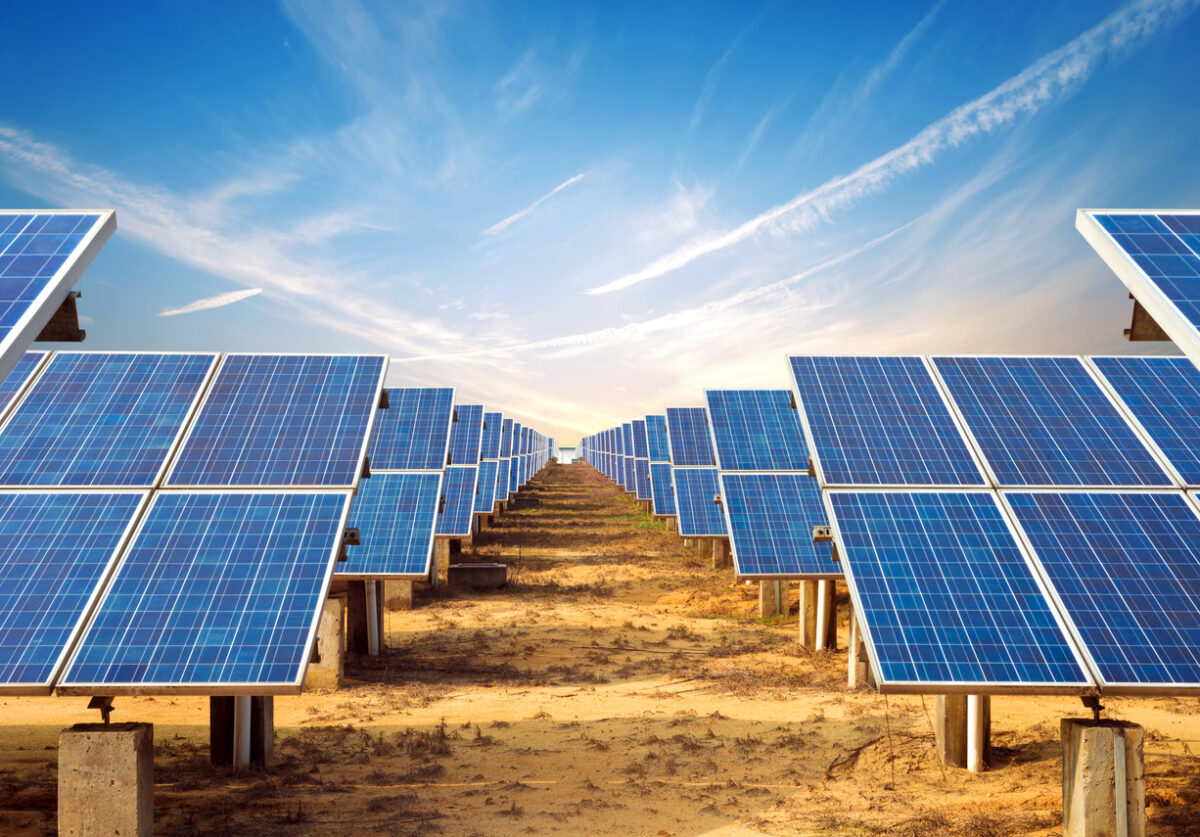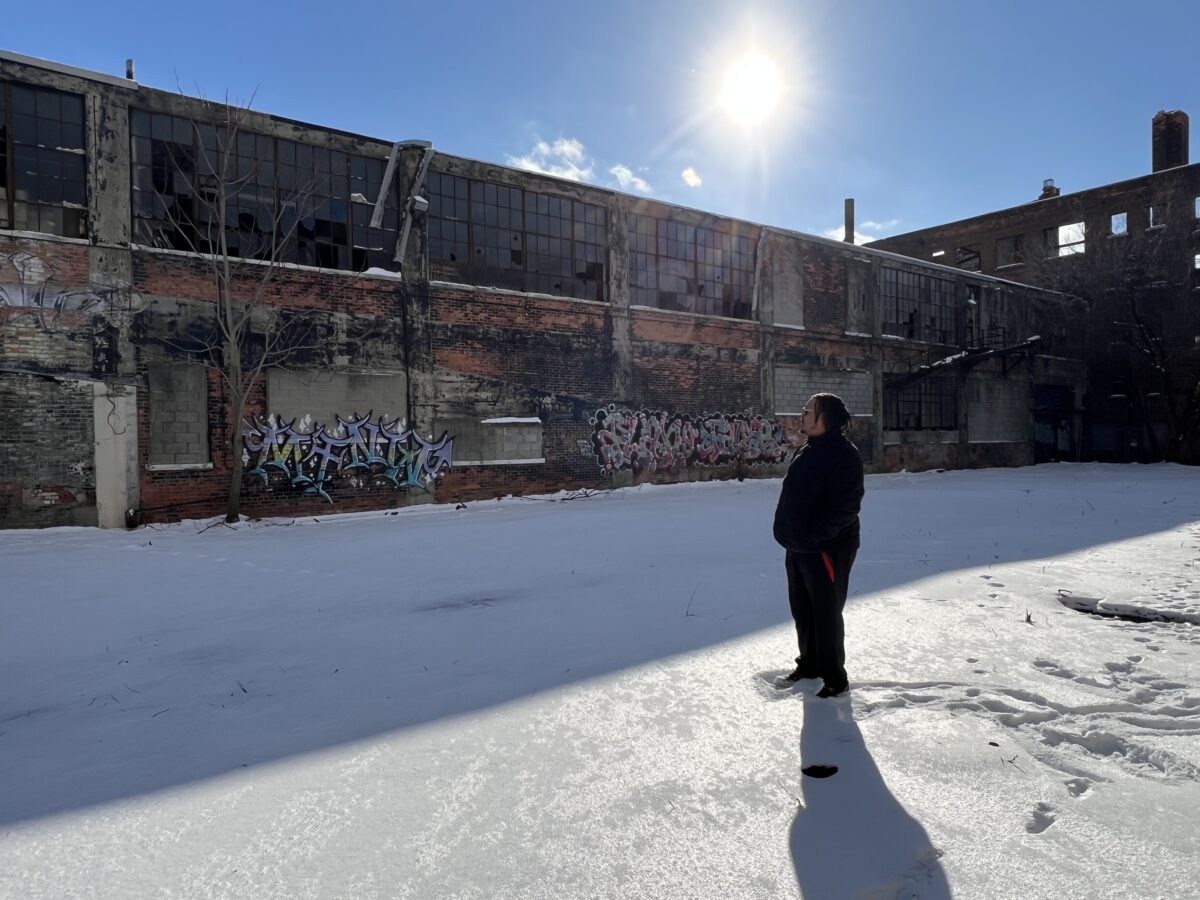Overview:
-Michigan's 24,000 contaminated brownfields, remnants of its industrial past, could make a green transformation.
-Solar energy projects offer a path to renewal.
-Sites like retiring coal plants are already connected to the energy grid, saving millions in development costs in a conversion to solar power, says the Environmental Law & Policy Center's Kelly Thayer.
By DOUGLAS J. GOUTH
Inside Climate News
Michigan has 24,000 known contaminated sites, a legacy of heavy manufacturing where industries carelessly discarded hazardous materials with minimal regulatory oversight. Taxpayers are often left to clean up these abandoned locations, known as brownfields, while the sheer volume of toxic sites has overwhelmed state regulators.
With a little effort, these spaces can be more than a permanent blight on the landscape. Kelly Thayer, senior policy advocate with the Environmental Law & Policy Center, envisions a future where Michigan’s brownfields are transformed into sites for diverse solar energy projects.
The potential for new solar siting in Michigan aligns with growing nationwide support of the technology, according to a survey co-led by the University of Michigan. Among residents living within 3 miles of solar energy developments, positive opinions about the projects outnumbered negative ones by almost a 3-to-1 ratio.
For the study, a large-scale solar project was defined as a ground-mounted photovoltaic system that generates 1 megawatt or more of direct current. The majority of respondents lived near new greenfield solar sites. “Disturbed” industrial locations or retiring coal plants were strongly preferred for solar development over forests or productive farmland.
Thayer, from Frankfort on the shores of Lake Michigan, said there is already precedent for solar on former industrial land in his home state. A 120-megawatt solar array on a long-vacant mining operation in Michigan’s Upper Peninsula, for example, was met by residents with little controversy.
Yet, a Michigan Department of Natural Resources proposal to transition a former oil-and-gas plot in Gaylord to solar energy was met with substantial public backlash in January. Following resident protests against tree and grassland removal for the solar array, the agency extended the public comment period and halted state land leases for solar projects.
This limbo period gives Michigan a chance to readjust its solar siting approach, with an emphasis on distressed lands that would allow the technology to flourish, Thayer said.
“The work now is to chart the near-term future of how Michiganders get their energy,” said Thayer, whose advocacy group focuses on renewable energy and clean transportation solutions for the Midwest. “This can be talked about through the lens of climate or the environment, but the public health ramifications are enormous as well.”
Brownfields: A vital asset
Last year, the state of Michigan won a $129 million grant from the U.S. Environmental Protection Agency for utility-scale renewable energy projects, including those on brownfields. These “orphan” industrial plots — landfills, auto plants and other properties left to molder by private industry — are vital assets for a state seeking to reduce its reliance on fossil fuels, noted Thayer.
Michigan aims to be a national climate action leader, driven by Gov. Gretchen Whitmer’s 2050 carbon neutrality goals. Among the tenets of the MI Healthy Climate Plan is streamlining the siting process for wind, solar and battery storage projects. State legislation like Senate Bill 277, meanwhile, includes solar facilities as a permitted use for farmers under the Farmland and Open Space Preservation Act.
Thayer’s organization, the Environmental Law & Policy Center, also views retiring coal plants as potential solar energy hubs, considering that they are already connected to the energy grid. For instance, the organization helped develop a blueprint for the Dan E. Karn coal plant site, slated as the future home for an 85-megawatt solar energy site expected to be operational in 2026.
“These are flat, highly disturbed sites that also have a substation in place that’s hard-wired to the grid,” Thayer said. “Having that infrastructure saves millions in development, and saves time because it takes four or five years to add new energy resources to the grid.”
Some Michigan clean energy projects are hindered by years-long grid connection delays as well as restrictive zoning ordinances that impede their development. In addition, Michigan lacks a comprehensive database of brownfields that detail key characteristics sought by solar developers, said Julie Lowe, brownfield coordinator for the remediation and redevelopment division of the Michigan Department of Environment, Great Lakes, and Energy (EGLE).
“Developers will have to use multiple resources to site projects on known sites of contamination,” said Lowe. “They need databases for tree canopy cover, or have to do site reconnaissance to eyeball the slope and see if it fits their needs.”
MORE SOLAR NEWS
Can solar power ease energy burden for Detroit’s low-income communities?
A $200,000 grant from the U.S. Department of Energy is enabling the North End Woodward Community Coalition to establish a community solar trust. This initiative will install solar arrays at key sites in Detroit’s North End, Highland Park, and Hamtramck, generating energy credits to be redistributed to local residents.
Detroit’s solar neighborhoods initiative picks final sites: Greenfield-McNichols, Houston-Whittier
The solar arrays will help power 127 city buildings. Homeowners in these areas will receive twice their home’s fair market value or $90,000, whichever is higher.
Detroit unveils designs for first solar neighborhoods
Detroit’s first solar neighborhoods aim to integrate renewable energy and community gardens into the urban landscape, as unveiled by Mayor Mike Duggan and city officials.
An array of solar options
EGLE does offer a list of guidelines for anyone asking to purchase a contaminated property for renewable energy development. Prospective buyers must conduct a two-phase Baseline Environmental Assessment before moving ahead with a project. Due diligence may encompass a deep dive into a site’s former use, as well as comprehensive testing of soil or groundwater samples.
“You may have to go back to the 19th century to determine what the property was used for,” Lowe said. “And there might be drilling or radar work needed to see if there’s something in the ground. For brownfields, we see solvents [in the soil] for dry cleaning or auto repair, because those were chemicals used in those activities.”
Various brownfield incentives and programs may subsidize environmental remediation or any additional assessment a site requires, added Lowe. EGLE’s Brownfield Tax Increment Financing utilizes the rise in tax revenue from a revitalized site to reimburse developers for the cleanup and demolition work that generated that increase.
That is not to say developers should always foot the bill, said Thayer. A series of “polluter pay” laws — which force parties responsible for contamination to pay for site cleanup and remediation costs — are currently being proposed by Michigan lawmakers. Thayer also advocates for virtual power plant programs, enabling utilities to pay homeowners with solar and battery storage to contribute stored power during peak demand.
Community solar, which involves installing arrays on vacant lots or working farmlands, can be another multibillion-dollar boon for Michigan, said Thayer. According to a 2021 study by Michigan State University, community solar could deliver a nearly $1.5 billion boost to the state’s economy over the next 30 years.
For now, Michigan officials should prioritize cleaning up and advancing solar energy projects on the state’s innumerable polluted brownfields, said Sarah Mills, a University of Michigan researcher who directs the Center for EmPowering Communities at the Graham Sustainability Institute.
“I go to meetings about large renewables projects, and it’s mostly for farmland,” said Mills. “People will say, ‘Why here, why not a brownfield?’ From a community acceptance perspective, this is what most people consider a no-brainer.”





